Pharaohs in Dixieland – how 19th-century America reimagined Egypt to justify racism and slavery
- 19th-century America reimagined ancient Egypt to justify racism and slavery, particularly in the slaveholding South.
- The founders of Memphis, Tennessee, named their city after the ancient Egyptian capital, hoping to create a prosperous society sustained by enslaved labor.
- Pro-slavery thinkers like George Fitzhugh and Robert Barnwell Rhett invoked Egypt as an example to follow, but their view of history was distorted, with many slaves in ancient Egypt being originally captured as prisoners of war, not born into slavery.
- American School of Ethnology promoted the idea that races had separate, unequal origins to justify Black inferiority and slavery, “whitening” Egypt by portraying it as a slaveholding civilization dominated by whites.
- Abolitionists saw ancient Egypt through a different lens, using biblical references like the Exodus to symbolize tyranny and human oppression, and invoking Egypt as a tool of emancipation, with African American writers and activists like Phillis Wheatley and Sojourner Truth using it to assert their own humanity and demand freedom.
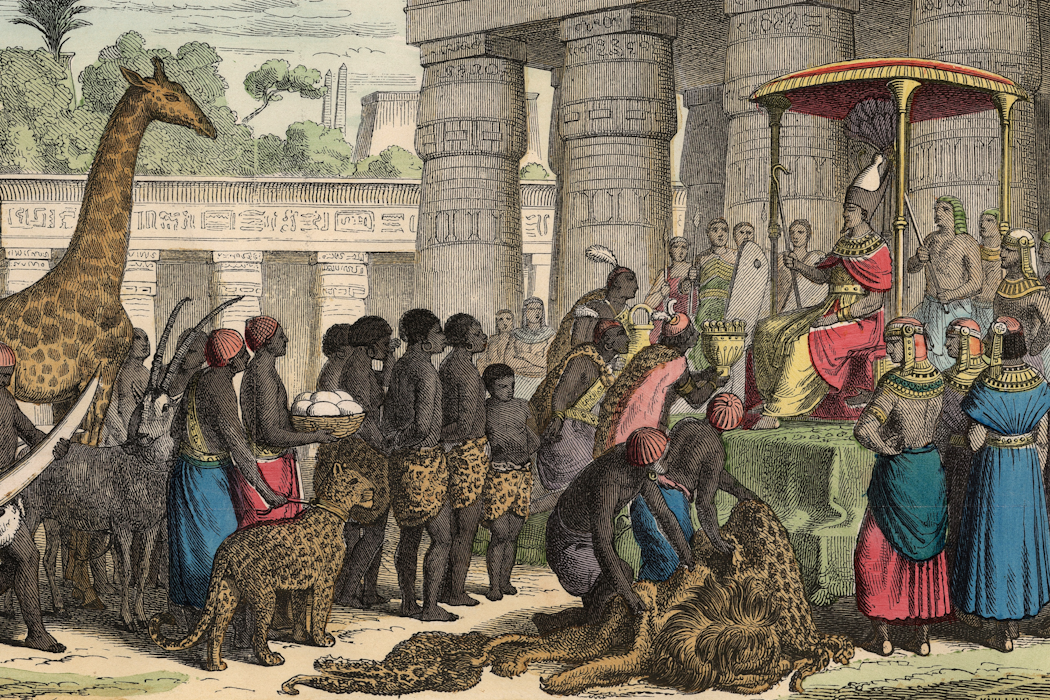
When Napoleon embarked upon a military expedition into Egypt in 1798, he brought with him a team of scholars, scientists and artists. Together, they produced the monumental “Description de l’Égypte,” a massive, multivolume work about Egyptian geography, history and culture.
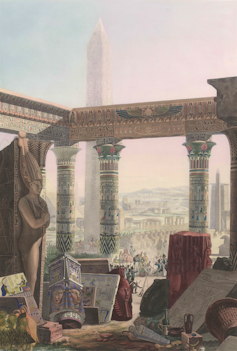
Wikimedia Commons
At the time, the United States was a young nation with big aspirations, and Americans often viewed their country as an heir to the great civilizations of the past. The tales of ancient Egypt that emerged from Napoleon’s travels became a source of fascination to Americans, though in different ways.
In the slaveholding South, ancient Egypt and its pharaohs became a way to justify slavery. For abolitionists and African Americans, biblical Egypt served as a symbol of bondage and liberation.
As a historian, I study how 19th-century Americans – from Southern intellectuals to Black abolitionists – used ancient Egypt to debate questions of race, civilization and national identity. My research traces how a distorted image of ancient Egypt shaped competing visions of freedom and hierarchy in a deeply divided nation.
Egypt inspires the pro-slavery South
In 1819, when lawyer John Overton, military officer James Winchester and future president Andrew Jackson founded a city in Tennessee along the Mississippi River, they christened it Memphis, after the ancient Egyptian capital.
While promoting the new city, Overton declared of the Mississippi River that ran alongside it: “This noble river may, with propriety, be denominated the American Nile.”
“Who can tell that she may not, in time, rival … her ancient namesake, of Egypt in classic elegance and art?” The Arkansas Banner excitedly reported.
In the region’s fertile soil, Chancellor William Harper, a jurist and pro-slavery theorist from South Carolina, saw the promise of an agricultural empire built on slavery, one “capable of being made a far greater Egypt.”
There was a reason pro-slavery businessmen and thinkers were energized by the prospect of an American Egypt: Many Southern planters imagined themselves as guardians of a hierarchical and aristocratic system, one grounded in landownership, tradition and honor. As Alabama newspaper editor William Falconer put it, he and his fellow white Southerners belonged to a “race that had established law, order, and government on earth.”
To them, Egypt represented the archetype of a great hierarchical civilization. Older than Athens or Rome, Egypt conferred a special legitimacy. And just like the pharaohs, the white elites of the South saw themselves as the stewards of a prosperous society sustained by enslaved labor.
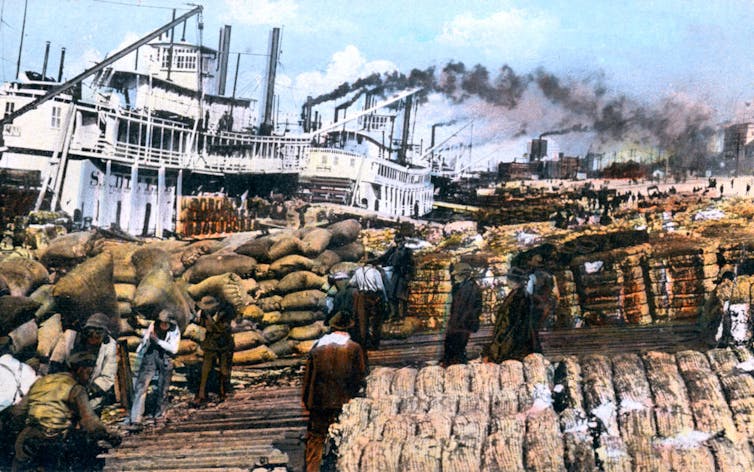
The Print Collector/Getty Images
Leading pro-slavery thinkers like Virginia social theorist George Fitzhugh, South Carolina lawyer and U.S. Senator Robert Barnwell Rhett and Georgia lawyer and politician Thomas R.R. Cobb all invoked Egypt as an example to follow.
“These [Egyptian] monuments show negro slaves in Egypt at least 1,600 years before Christ,” Cobb wrote in 1858. “That they were the same happy negroes of this day is proven by their being represented in a dance 1,300 years before Christ.”
A distorted view of history
But their view of history didn’t exactly square with reality. Slavery did exist in ancient Egypt, but most slaves had been originally captured as prisoners of war.
The country never developed a system of slavery comparable to that of Greece or Rome, and servitude was neither race-based nor tied to a plantation economy. The mistaken notion that Egypt’s great monuments were built by slaves largely stems from ancient authors and the biblical account of the Hebrews. Later, popular culture – especially Hollywood epics – would continue to advance this misconception.
Nonetheless, 19th-century Southern intellectuals drew on this imagined Egypt to legitimize slavery as an ancient and divinely sanctioned institution.
Even after the Civil War, which ended in 1865, nostalgia for these myths of ancient Egypt endured. In 1877, former Confederate officer Edward Fontaine noted how “Veritable specimens of black, woolyheaded negroes are represented by the old Egyptian artists in chains, as slaves, and even singing and dancing, as we have seen them on Southern plantations in the present century.”
Turning Egypt white
But to claim their place among the world’s great civilizations, Southerners had to reconcile a troubling fact: Egypt was located in Africa, the ancestral land of those enslaved in the U.S.
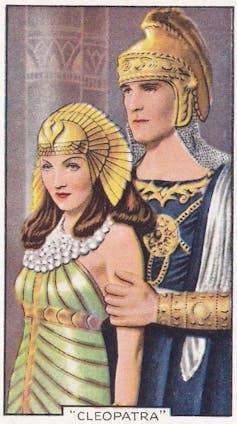
Nextrecord Archives/Getty Images
In response, an intellectual movement called the American School of Ethnology – which promoted the idea that races had separate, unequal origins to justify Black inferiority and slavery – set out to “whiten” Egypt.
In a series of texts and lectures, they portrayed Egypt as a slaveholding civilization dominated by whites. They pointed to Egyptian monuments as proof of the greatness that a slave society could achieve. And they also promoted a scientifically discredited theory called “polygenesis,” which argued that Black people did not descend from the Bible’s Adam, but from some other source.
Richard Colfax, the author of the 1833 pamphlet “Evidence Against the Views of the Abolitionists,” insisted that “the Egyptians were decidedly of the Caucasian variety of men.” Most mummies, he added, “bear not the most distant resemblance to the negro race.”
Physician Samuel George Morton cited “Crania Aegyptiaca,” an 1822 German study of Egyptian skulls, to reinforce this view. Writing in the Charleston Medical Journal in 1851, he explained how the German study had concluded that the skulls mirrored those of Europeans in size and shape. In doing so, it established “the negro his true position as an inferior race.”
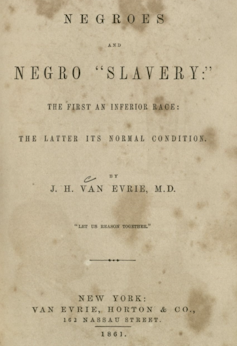
Harvard Countway Library Center for the History of Medicine
Physician Josiah C. Nott, Egyptologist George Gliddon and physician and propagandist John H. Van Evrie formed an effective triumvirate: Through press releases and public lectures featuring the skulls of mummies, they turned Egyptology into a tool of pro-slavery propaganda.
“The Negro question was the one I wished to bring out,” Nott wrote, adding that he “embalmed it in Egyptian ethnography.”
Nott and Gliddon’s 1854 bestseller “Types of Mankind” fused pseudoscience with Egyptology to both “prove” Black inferiority and advance the idea that their beloved African civilization was populated by a white Egyptian elite.
“Negroes were numerous in Egypt,” they write, “but their social position in ancient times was the same that it now is, that of servants and slaves.”
Denouncing America’s pharaohs
This distorted vision of Egypt, however, wasn’t the only one to take hold in the U.S., and abolitionists saw this history through a decidedly different lens.
In the Bible, Egypt occupies a central place, mentioned repeatedly as a land of refuge – notably for Joseph – but also as a nation of idolatry and as the cradle of slavery.
The episode of the Exodus is perhaps the most famous reference. The Hebrews, enslaved under an oppressive pharaoh, are freed by Moses, who leads them to the Promised Land, Canaan. This biblical image of Egypt as a land of bondage deeply shaped 19th-century moral and political debates: For many abolitionists, it represented the ultimate symbol of tyranny and human oppression.
When the Emancipation Proclamation went into effect on Jan. 1, 1863, Black people could be heard singing in front of the White House, “Go down Moses, way down in Egypt Land … Tell Jeff Davis to let my people go.”
Black Americans seized upon this biblical parallel. Confederate President Jefferson Davis was a contemporary pharaoh, with Moses still the prophet of liberation.
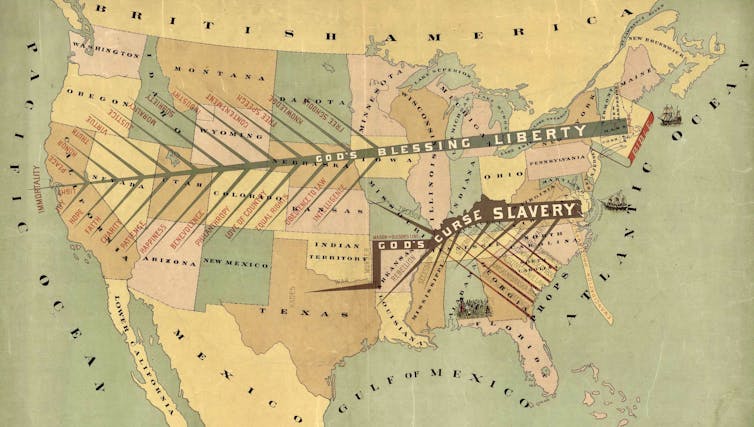
Library of Congress
African American writers and activists like Phillis Wheatley and Sojourner Truth also invoked Egypt as a tool of emancipation.
“God has implanted in every human heart a principle which we call the love of liberty,” Wheatley wrote in a 1774 letter. “It is impatient with oppression and longs for deliverance; and with the permission of our modern Egyptians, I will assert that this same principle lives in us.”
Yet the South’s infatuation with Egypt shows how antiquity can always be recast to serve the powerful. And it’s a reminder that the past is far from neutral terrain – that there is rarely, if ever, a ceasefire in wars over history and memory.
![]()
Charles Vanthournout does not work for, consult, own shares in or receive funding from any company or organization that would benefit from this article, and has disclosed no relevant affiliations beyond their academic appointment.
